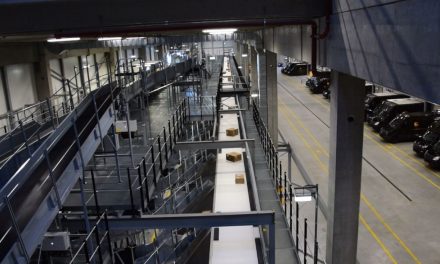
Delivering the goods
The majority of the British public enjoys its weekly trip to the supermarket so much that it is yet to consider realistically the purchasing of groceries online.
High-profile retailers have discovered this the hard way in the last year, having launched e-grocery operations before discovering the market isn’t as developed as they had thought.
Somerfield’s 24-7 operation is perhaps the best known e-grocery failure. It went online in September 1999, but closed just nine months later with the loss of three picking and distribution centres in London and Bristol. The company, which had recently bought Kwik Save, said it needed to concentrate on the convenience store aspect of its operation.
“The hard fact is that 24-7 has not been growing and represents a significant distraction to management at a time when its focus has to be on the core Somerfield and Kwik Save business,” said newly-appointed executive chairman John von Sprekelsen at the time.
Little demand
Budgens’ e-grocery venture was pulled in September for similar reasons, although its distribution centres were kept on to service the company’s separate Teleshop operation, which has local authority contracts for deliveries to the elderly.
Chief executive Martin Hyson said: “The launch of our internet shopping service has established that at this stage there is a low
level of customer interest. We believe that we can deliver greater value to our shareholders by focusing on our core proposition of neighbourhood stores.”
It is significant that both retailers blamed the closures on the need to focus on local outlets rather than become bogged down in distribution logistics.
Tesco.com, operated by supermarket giant Tesco and the world’s largest online grocery retailer with over 750,000 registered users, is bucking the trend. Unlike 24-7 and Budgens, however, Tesco.com has shunned purpose-built distribution centres in favour of more localised methods.
Orders placed with the service are fulfilled by supermarket staff, who simply hand-pick the orders from the customer’s nearest store,
Tesco is the world’s largest internet grocer. Its success is underpinned by keeping the emphasis on a local service
Distribution
E-grocers market overview
from where they are delivered within two-hours at a charge of £5 per order. Tesco claims not to make a profit from the delivery charge, and with more than 6o,ooo orders a week, Tesco.com customers don’t seem to mind the fee.
Tesco.com’s innovative approach to e-grocery retailing, which has resulted in a projected annual turnover of £200m this year, has allowed it to roll out its service at speed. Unlike Somerfield and Budgens, Tesco hasn’t had to plough resources into the venture and has stolen a march on the opposition, fostering a large customer base.
Tesco’s closest supermarket competitor is Sainsbury’s. Its Sainsbury’s To You online shopping scheme was launched in May and has the ability to deliver to 60% of the UK population, but with a different focus to that of Tesco.com.
Mixed approach
Although home delivery is made from 33 Sainsbury’s stores, the company’s approach has, like last year’s e-grocery flops, embraced a central distribution model with the open-ing of two “picking centres” in Gorton, Manchester and Park Royal, London.
Park Royal, which opened in June, covers 16,722m2 (180,000 sq ft) and stocks 15,000 lines. At 6,o38m2 (65,000 sq fi), Gorton is less than half the size of Park Royal but also stocks 15,000 products. It has a capacity for 5,000 weekly orders, although Sainsbury’s isn’t saying whether or not these are being fulfilled.
The time taken to set up these centres may have allowed Tesco.com to forge ahead, but Sainsbury’s’ e-commerce director, Angela Megson, is confident about a mixed approach to distribution.
“We are expanding our service by offering delivery by a combination of stores, medium and large picking centres,” she says. “We have 33 stores online which will give us rapid penetration into the home-shopping market before we transfer to picking centres when required.”
The need to utilise picking centres is at its greatest in areas like London and Manchester where requirements are at their highest through population density.
“In established areas of high demand we will use the picking-centre model. Picking centres built specifically for home shopping are generally acknowledged as providing the most efficient and effective service for high levels of customers,” says Megson.
Sainsbury’s is also rolling out its Homeport scheme, which allows customers to take delivery of groceries while they are out. It works by depositing the weekly shop outside the customer’s house in a secure box. This can only be dislodged from the “homeport” outside the customer’s home and opened by using a personalised smart card.
“Being able to deliver shopping to customers while they are out is a major piece in the home shopping puzzle,” says Megson. “Instead of visiting a neighbourhood four or five times a day in different two-hour slots, we can drop a large number of deliveries off on one journey.”
Homeport’s marketing director, Mark Lunn, believes the system will accelerate the e-grocery sector.
“We can simplifr logistics and reduce costs for the retailer,” he says. “This system will stimulate home shopping because, although ordering goods through the internet is very easy, it is difficult to deliver goods if the people are not at home.”
Basic differences
But the main e-grocers still have fundamentally different approaches to online delivery. A centralised model of distribution simply didn’t prove profitable for the two online services that failed last year.
Whilst Sainsbury’s has put its faith in the model, albeit as part of a mixed approach with stores also fielding orders, Tesco, the market leader, has shunned the idea.
The fact that these businesses are tackling their e-commerce operations in different ways is a result of the market being relatively untested.
But Sainsbury’s shareholders and those,
Online home shopping has captured the imagination of some, but how to service the customer is the main debate amongst e.tailers
like the iio workers at Sainsbury’s To You’s Gorton plant, whose jobs are dependent on home shopping delivery, will be hoping that the distribution-centre model proves successful as the market develops.
Perhaps, tellingly, one new e-grocer is entering the arena in support of the distribution centre approach. Last Mile Solutions (LMS) set up last year by three former Goldman Sachs bankers and two Marks & Spencer executives, is looking to be the first c-grocery operation to cut supermarkets out of the equation altogether, by delivering directly from warehouses. It will go live around the M25 this summer and nationwide within the next five years.
US model
The company's approach is based on its own analysis of the US e-grocery market, where home deliveries from dedicated centres proved more profitable than picking goods from stores.
And instead of spending the vast sums on marketing and new product development that has proved disastrous to many US e-grocers, the company has secured a £35m investment from Waitrose, the well-established grocery arm of the John Lewis Partnership.
LMS already has a pre-letting on a 37,400m2 (295,000 sq fi) distribution centre at Arlington’s Hatfield business park in Hertfordshire. It is looking for similar sites in Bristol, Birmingham and Manchester.
The company will be hoping to settle the debate about whether distribution centres or supermarket order-picking is more profitable in favour of the former option. If it fails, there will be lessons for all those involved in e-grocery.













